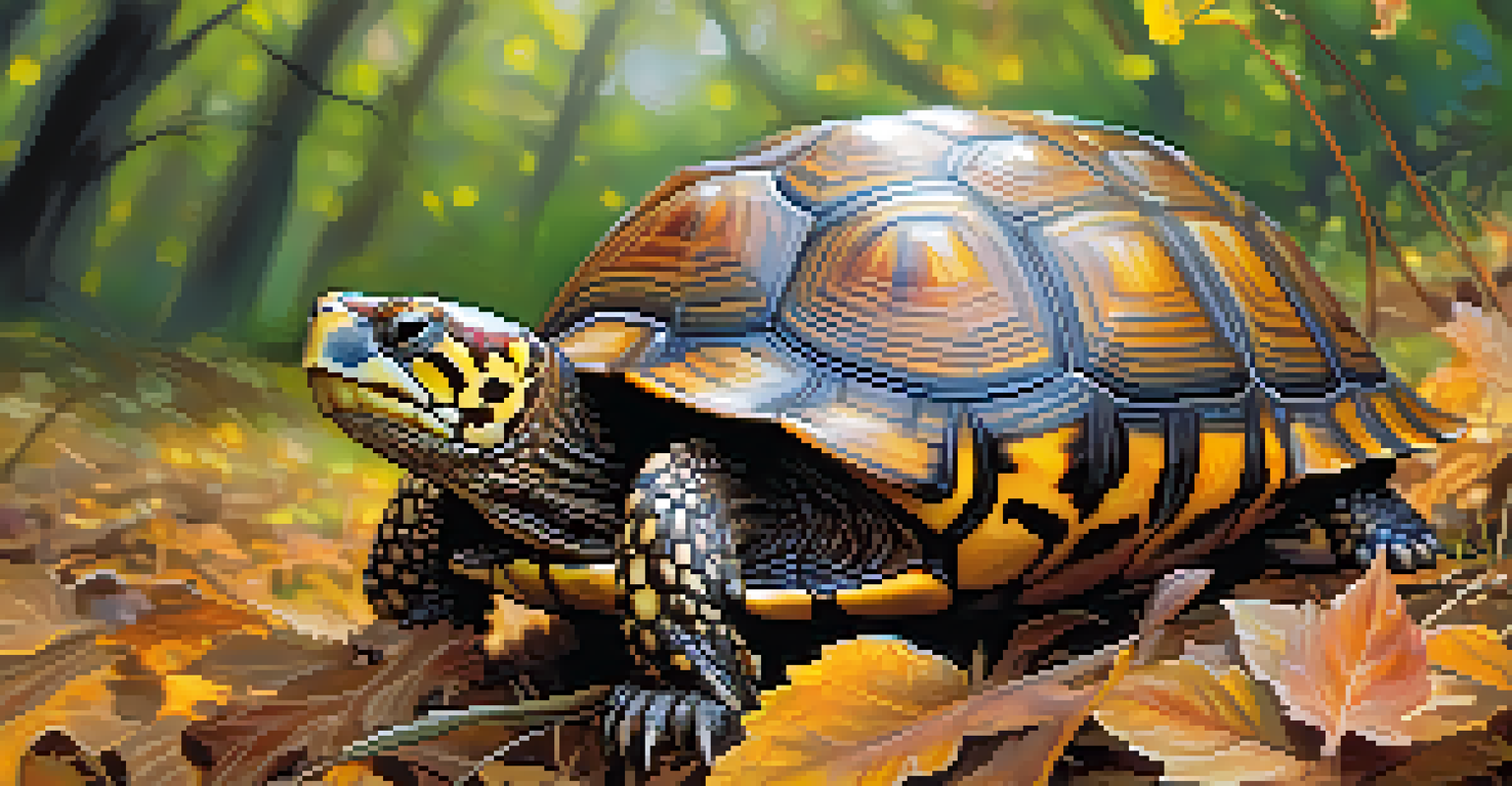Climate Change Effects on Georgia's Wildlife and Conservation

Understanding Climate Change and Its Local Impact
Climate change refers to long-term shifts in temperatures and weather patterns, primarily driven by human activities. In Georgia, these changes manifest as rising temperatures, altered precipitation patterns, and more extreme weather events. For wildlife, these shifts create a challenging environment, affecting habitats and food sources.
The Earth does not belong to us: we belong to the Earth.
As temperatures rise, many species struggle to adapt, leading to shifts in their distribution. For instance, animals that thrive in cooler climates might find their habitats increasingly inhospitable. This can lead to reduced populations or even local extinctions, highlighting the urgent need for effective conservation strategies.
Moreover, the interconnectedness of ecosystems means that the effects ripple through food chains. A decline in one species can have cascading impacts on others, underscoring the importance of understanding these dynamics to inform conservation efforts in the state.
Shifting Habitats: A Challenge for Georgia's Wildlife
As climate change alters weather patterns, many of Georgia's native species are being forced to relocate. This includes iconic animals like the Eastern Box Turtle and the Gopher Tortoise, which may struggle to find suitable habitats. The loss of familiar environments can lead to increased competition for resources, further threatening their survival.

Wetlands, which serve as critical habitats for a variety of species, are also at risk due to rising sea levels and changing rainfall patterns. These ecosystems are vital for many birds, amphibians, and other wildlife, and their degradation can lead to a loss of biodiversity. Protecting these areas is essential for maintaining ecological balance.
Climate Change Threatens Wildlife
Rising temperatures and altered precipitation patterns in Georgia significantly impact native species and their habitats.
Additionally, urbanization exacerbates these challenges as human developments encroach on natural habitats. This not only fragments wildlife populations but also limits their ability to adapt to climate change. Conservationists must prioritize habitat protection and restoration to mitigate these impacts.
The Impact of Rising Temperatures on Species Survival
Rising temperatures can have profound effects on Georgia's wildlife, influencing breeding patterns and migration. Species such as the American Robin may find their traditional nesting seasons disrupted, leading to decreased reproductive success. This can impact overall population numbers and the health of ecosystems.
What we are doing to the forests of the world is but a mirror reflection of what we are doing to ourselves and to one another.
Furthermore, higher temperatures can increase the prevalence of diseases among wildlife. For instance, amphibians are particularly vulnerable to temperature changes, which can exacerbate the spread of pathogens. This not only threatens individual species but also the broader ecological community, as the loss of one species can disrupt food webs.
Addressing these challenges requires a proactive approach to monitoring species health and implementing conservation practices. By understanding the specific vulnerabilities of different species, conservationists can develop targeted strategies to help them adapt.
Changing Precipitation Patterns and Their Effects
In Georgia, climate change is leading to unpredictable rainfall patterns, which can have detrimental effects on wildlife habitats. Extended droughts can dry up wetlands, affecting species that rely on these areas for survival. Conversely, heavy rainfall can lead to flooding, further disrupting habitats and food sources.
These changes in precipitation not only impact aquatic ecosystems but also terrestrial ones. For example, certain plant species may struggle to survive in altered moisture conditions, which can affect the herbivores that rely on them for food. Such disruptions can have far-reaching consequences for the entire ecosystem.
Invasive Species Complicate Conservation
As climate change progresses, invasive species are thriving and outcompeting native wildlife, threatening biodiversity.
Conservation efforts must adapt to these changing conditions, focusing on resilience. This may involve restoring natural water systems and creating buffers to protect vulnerable habitats from extreme weather events.
The Role of Invasive Species in a Changing Climate
Climate change can exacerbate the problems posed by invasive species in Georgia. As temperatures rise, certain invasive plants and animals may thrive, outcompeting native species for resources. This can lead to a decline in biodiversity, as native species struggle to survive in altered ecosystems.
For instance, the introduction of the Burmese Python has had devastating effects on local wildlife in the Everglades, and similar threats loom for Georgia's ecosystems. These invaders can disrupt food chains and habitats, making it crucial for conservationists to monitor and manage their impacts.
Addressing the invasive species issue requires a combination of prevention, control, and education. By raising awareness and implementing effective management strategies, we can help protect Georgia's native wildlife from the dual threats of climate change and invasive species.
Conservation Strategies to Combat Climate Change Effects
In the face of climate change, proactive conservation strategies are more important than ever. This includes creating wildlife corridors that allow animals to migrate to more suitable habitats as their environments change. By preserving these pathways, we can help maintain healthy populations and ecosystems.
Additionally, habitat restoration projects play a vital role in enhancing resilience against climate change. Rehabilitating degraded areas and reintroducing native plant species can create more stable environments for wildlife. These actions not only benefit biodiversity but also help sequester carbon, contributing to climate mitigation efforts.
Community Involvement is Essential
Engaging local communities in conservation efforts fosters stewardship and enhances the effectiveness of strategies against climate change.
Collaborative efforts among governmental agencies, non-profits, and local communities are essential for successful conservation initiatives. By working together, we can develop comprehensive plans that address the multifaceted challenges posed by climate change.
Community Involvement in Conservation Efforts
Engaging local communities in conservation efforts is crucial for protecting Georgia's wildlife. Public awareness campaigns can educate residents about the impacts of climate change and the importance of biodiversity. When communities understand the value of their local ecosystems, they are more likely to take action.
Volunteer programs, such as tree planting and clean-up initiatives, provide hands-on opportunities for individuals to contribute. These activities not only benefit the environment but also foster a sense of stewardship among participants. By connecting people with nature, we can inspire a collective commitment to conservation.

Furthermore, local knowledge and involvement can guide conservation strategies that are culturally relevant and effective. By incorporating community perspectives, we can ensure that our efforts to combat climate change are inclusive and sustainable.